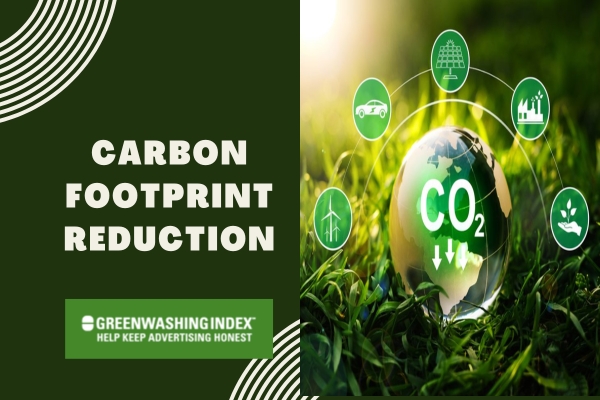Have you ever thought about how every step you take leaves a mark? Not just on the ground but on our planet. Carbon footprint reduction is a path everyone can walk down, and it takes simpler steps than you might think!
In this journey for a greener tomorrow, I’ll guide you in making climate-conscious choices that lighten your impact on Mother Earth. A single change might seem small, but together, our steps can create massive strides.
Want to know how to shrink your carbon footprint effectively? It’s easier than you may believe. Start with turning off lights when not in use or swapping out for those long-lasting LED bulbs. Embrace cooler showers and enjoy plant-based meals more often.
Each action we take can help us live a more eco-friendly lifestyle. And that’s just the beginning! Keep reading, and I’ll unveil even more sustainable living tips to make green practices an everyday part of life.
Here’s What You Can Gain:
- Steps toward a healthier planet
- Everyday tips for an eco-friendly life
- Easy changes for big environmental impacts
- Real talk on living sustainably every day
Embracing Carbon Footprint Reduction at Home
Living an eco-friendly lifestyle starts right at home. Shrinking my carbon footprint means making smarter, more climate-conscious choices every day, especially about how I use energy.
Making Energy Choices That Count
When I think about energy efficiency, I’m looking at ways to do more with less power. By cutting down on energy waste, not only can I save money on bills, but I also make a big dent in my environmental impact. Here’s how making the right energy choices helps in carbon footprint reduction:
- Switching to Energy-Efficient Appliances: Nowadays, many appliances come with labels showing their energy efficiency — like the ENERGY STAR rating in the US. When it’s time to replace an old fridge or washing machine, choosing one of these efficient models makes a huge difference. They use less electricity, which means fewer greenhouse gases from power plants.
For example, replacing traditional light bulbs with LED bulbs can significantly cut back on the amount of electricity used over time. LEDs last longer, too — so that’s less waste and shopping trips!
- Smart Thermostats: These nifty gadgets learn my schedule and adjust heating and cooling when I’m not home to save energy. Plus, good insulation keeps the warmth in during winter and out during summer without having to crank up the thermostat.
- Unplugging Devices: It sounds simple, but unplugging electronics when they’re not being used can cut down on “phantom” energy drain — small amounts of power that add up across all our devices.
Each choice may seem small alone, but together, they contribute massively towards reducing my carbon footprint through better energy choices.
The Power of Renewable Energy
Another big step towards carbon footprint reduction is tapping into nature’s own power supply: renewable energy like wind or solar power.
- Solar Panels: They transform sunlight directly into electricity for homes. The initial cost might make some folks hesitate; however, over time, they pay for themselves through lower electric bills — plus some governments offer incentives for going solar!
Moreover, once installed on my roof or property somewhere sunny, solar panels need little upkeep but keep on giving clean power for years.
- Wind Turbines: For those with enough space and suitable conditions (like regular strong winds), small wind turbines could be an option to consider as well. While larger-scale turbines are more common for commercial use, there are sizes designed for residential properties, too.
And just like solar panels, wind turbines produce zero emissions once they’re set up and blowing away!
Choosing renewable energies isn’t just a personal gain; it supports green practices across the globe by increasing demand for clean tech and reducing reliance on fossil fuels step by step.
By embracing both efficient energy-use habits at home and considering renewable options where possible, every person has the power to contribute significantly to carbon footprint reduction – paving our shared path toward sustainable living tips that nurture our planet for generations ahead.
Top 12 Ways to Reduce Your Carbon Footprint
I’m here to share some hands-on advice on shrinking your carbon footprint. We all know the importance of making climate-conscious choices for a healthier planet. Many people ask me, “How can I live an eco-friendly lifestyle?” Let’s dive into some practical steps.
1. Renewable Energy: Transition to a Cleaner Future
When it comes to shrinking my carbon footprint, one big step I can take is to use renewable energy like solar and wind power. These sources of energy are kinder to the planet because they don’t release harmful stuff like carbon dioxide into the air.
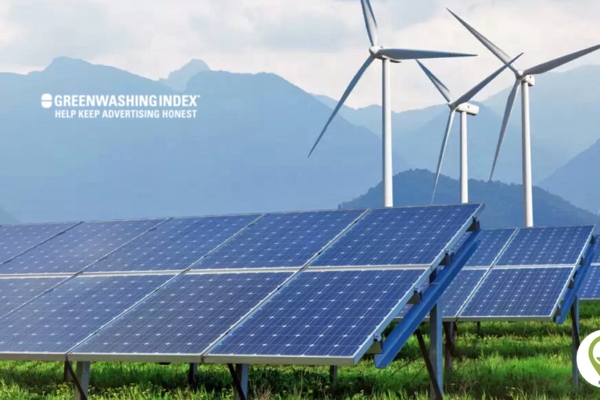
Embracing Solar and Wind Power
Renewable energy sources are key players in reducing our personal carbon footprints. Here’s what role they play:
- Solar Panels: Install solar panels on your roof if possible. They may be costly upfront, but they’ll reduce reliance on fossil fuels.
- Wind Turbines: If you live in a wind-prone area, consider small residential wind turbines.
- Green Energy Providers: Choose an electricity supplier that offers green power from solar or wind if you can’t install these systems yourself.
Using these renewable resources lessens our environmental impact significantly by cutting down the emissions linked to traditional power sources.
2. Green Technology Investments Pay Off
Investing in green technology might sound fancy, but it’s really about making smart choices today that will save me and the planet tomorrow. This kind of investment is something that pays off in more ways than one.

Eco-Friendly Innovations at Home
Investing in green technology has long-term benefits for carbon footprint reduction:
- LED Lights: Replace regular bulbs with LED ones; they use far less electricity and last longer, too.
- Energy Monitor: Get an energy monitor to keep track of how much power you’re using—and learn ways to cut back.
These investments might seem small, but imagine their impact when millions of us make them! This shows how eco-friendly living choices lead directly to sustainable living tips we can all benefit from.
By following these detailed actions towards an eco-friendly lifestyle, we help reduce our part in global warming while often saving money, too!
3. The Sky-High Cost of Air Travel
Air travel lets us see the world and visit people far away, but it comes with a big cost to the planet. Every time we fly, our plane burns fuel, which releases carbon dioxide – a gas that’s not good for Earth because it traps heat and warms the planet. The fact is that flying is one of the fastest ways to add to your personal carbon footprint. So, when we talk about carbon footprint reduction, thinking twice about air travel is key.

Choosing Earth Over Altitude
It’s tough when traveling by plane feels necessary or is the only choice, but flying less can really help in lowering my individual impact on the climate. Here are some impactful ways that choosing not to fly—or flying less—fits into a larger plan for shrinking my carbon footprint.
- Embracing Alternatives: Whenever possible, I go for other ways to travel, like trains or buses. These options generally use less fuel per person compared to planes.
- Virtual Meetings: Instead of flying out for business or events whenever I can, I encourage virtual meetings—it’s amazing how much can be done from afar nowadays!
- Local Adventures: I look out for fun places close by instead of heading off to distant lands – local tourism often surprises me with hidden gems.
- Less Frequent But Longer Trips: If I must fly, then I plan fewer trips but stay longer each time—this makes every flight count more and means fewer take-offs and landings.
- Offsetting Travel: When flights can’t be avoided, I look into ways to offset my flight emissions – this means supporting projects that reduce CO2 elsewhere as a way to balance things out.
By picking these choices over high-flying habits, not only do I bring down my own carbon trail left behind in the sky, but it also pushes demand down—a signal for airlines and industries tied with air travel that it’s time for greener skies ahead.
In simpler words, Fewer flights mean less fuel burned, which means fewer gases warming up our Earth, which then adds up to creating a healthier planet over time.
Reducing how much I fly aligns well with living an eco-friendly lifestyle and supports those bigger green practices many are aiming toward when they think about their environmental impact and want to make climate-conscious choices.
By carefully picking if and when to head up into the blue skies above, saying ‘no’ or ‘not now’ more often than before puts me on a firmer path towards sustainable living tips that make sense not just for me today—but also leaving something good behind tomorrow as well through effective carbon footprint reduction.
4. Water Usage Awareness
Water is a vital part of our daily lives — we use it for drinking, cooking, cleaning, and keeping our gardens green. But did you know that being smart about our water use isn’t just good for the planet; it can also shrink your carbon footprint? Here’s how.
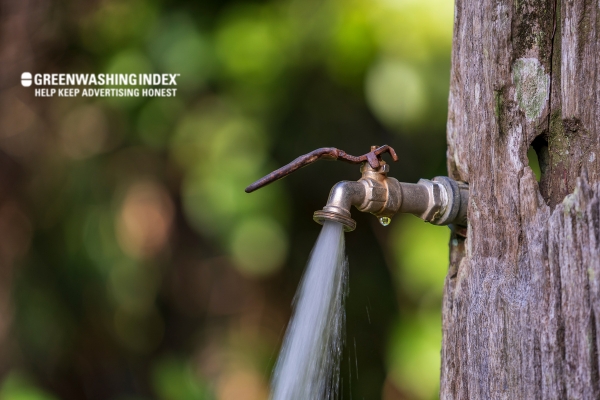
Drip by Drip Savings
Being aware of how much water we use can have a big impact on the environment. Every drop of water that comes out of our taps has to be cleaned at a water treatment plant, which uses energy. Most times, this energy comes from burning fossil fuels, which adds carbon dioxide — the main gas linked to climate change — into the air.
Therefore, using less water means we can reduce this energy demand and create fewer greenhouse gases. This is an important step in carbon footprint reduction.
Here’s what I do to make sure I’m saving as much water as possible:
- Turn off the tap: When brushing my teeth or washing dishes by hand, I make sure to turn off the tap instead of letting it run. Just imagine not wasting gallons of water every time!
- Fix leaks: A leaky faucet or toilet can waste more water than you think! Fixing these right away helps save lots of precious H2O. If I see or hear a drip at home, I try to fix it or call someone who can help me with it as soon as possible.
- Shower instead of bathing: Taking a shower usually uses less water than filling up a bathtub. When I shower, I keep it short and sweet: around 5 minutes is enough!
- Full loads only: When using my washing machine or dishwasher, waiting until there’s a full load saves more water (and energy) than running lots of smaller loads.
Thinking about these things helps me live an eco-friendly lifestyle. Water conservation may seem like small steps, but when many people start doing them together – wow! We could really make things better for our world!
So next time you’re about to let that faucet run while scrubbing potatoes or waiting for your bathroom sink to fill up before cleaning your face – remember this: each tiny action contributes to something bigger. By reducing your personal use bit by bit – drip by drip – you are actively participating in sustainable living and helping fight climate change.
It’s all about making smart, climate-conscious choices every day and recognizing that everything connects back to my own carbon footprint and environmental impact on Mother Earth.
5. A Plant-Based Pathway for Carbon Reduction
I want to share something important with you – a way to shrink your carbon footprint through what you eat. Every choice we make about food has an effect on the environment. The good news is that shifting towards plants is a big step in the right direction.

Rethinking Protein Sources
When we think about protein, meat often comes to mind first. But raising animals for food takes a lot of resources like water and land, and it produces a lot of greenhouse gases. Greenhouse gases are like a blanket for our planet that traps heat, and that’s what’s warming up the earth too much.
So, choosing proteins from plants instead can help reduce these emissions. Let me explain how.
Beans, such as lentils and chickpeas, peas, and nuts, are all great sources of protein. They take less water and less land to grow compared to animal proteins like beef or chicken. And here’s an interesting fact: growing plants also help clean our air since plants absorb carbon dioxide (a key greenhouse gas) while they grow.
By eating more plant-based meals – even if it’s just one or two days a week – you’re making a climate-conscious choice that echoes around the world; this is called carbon footprint reduction. Your personal carbon footprint gets smaller every time you choose vegetables over meat.
It may sometimes feel like one person can’t make much difference in facing global environmental challenges, but when many people start making eco-friendly lifestyle choices, it adds up!
Think of it as standing together with millions of others who are also choosing plant-based paths, each one contributing to sustainable living tips that benefit us all—making each plate filled with more greens an act of caring for our planet.
Here’s something simple to remember: every bite counts! When planning your meals, think “more veggies,” “more fruits,” “more legumes,” and “more whole grains.” These small changes in your diet can lead towards sustainable living, which means living in ways that don’t hurt future generations’ chances at having a safe planet, too.
If you’re worried about getting bored with plant-only meals – don’t be! There are countless recipes out there brimming with flavors from around the world precisely crafted for vibrant green practices in our daily lives.
Remember, this isn’t just about giving things up but rather discovering new tastes and nurturing both ourselves and Mother Earth through mindful eating habits – so let’s embrace this delightful journey toward carbon footprint reduction together!
6. Recycle Everything Possible
The stuff around us – papers, bottles, boxes, and cans – all add up in garbage dumps if we just throw them away. But there’s something simple I can do to help shrink my carbon footprint: recycle as much as I can. This isn’t just a good choice for me; it helps the whole planet, too.
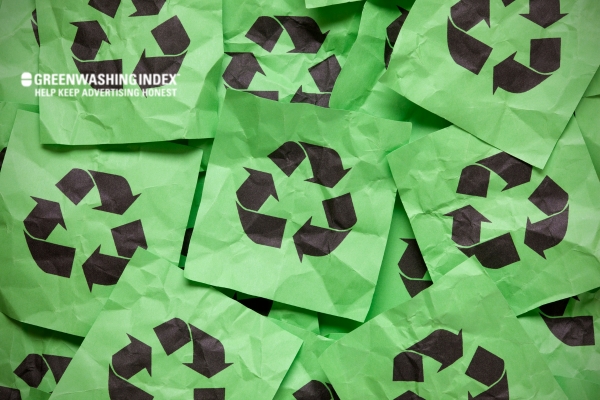
Cycle Sustainability Forward
To make a change, I start with being careful about what I put in the trash bin. Before getting rid of something, I ask myself if it can be recycled. This way, recycling becomes part of my routine. Why does this matter? Well, by recycling, less trash ends up in landfills. When piles of waste grow bigger and bigger at these places, they produce harmful gases like methane that heat up our world.
Not sure how to start? Here’s what I do:
First, separate your garbage at home. Put aside things like paper products (like newspapers and cardboard), glass jars or bottles, metal cans, and plastic containers.
Next, clean them up! Rinse out those jars and cans so that they’re ready for recycling centers to turn them into something new again.
Then, find out where your local community has placed recycling bins or centers. Make it a habit to take your separated items there.
Here’s the deal: consistency is key. The more often everyone recycles their stuff instead of tossing it out with regular garbage – every plastic bottle or aluminum can counts – the bigger impact we all make on reducing our carbon footprint!
One super tip to remember: electronic devices shouldn’t end up in regular trash either! Things like old cell phones or laptops have special places where they need to go because throwing electronics away carelessly harms our environment greatly.
So next time you’re about to pitch an item into the bin without a thought – pause! See if that’s an opportunity for carbon footprint reduction by recycling instead of contributing more waste to those growing hills at landfills.
Taking tiny steps each day towards green practices helps me live a more eco-friendly lifestyle while making climate-conscious choices for our Earth’s future well-being.
7. Reuse Revolutionizes Resourcefulness
Being smart with what I already own has transformed the way I look at my stuff. Reuse isn’t just good for my wallet; it’s like a secret weapon in the fight against climate change. By reusing, I give new life to items that might otherwise clog up our landfills.
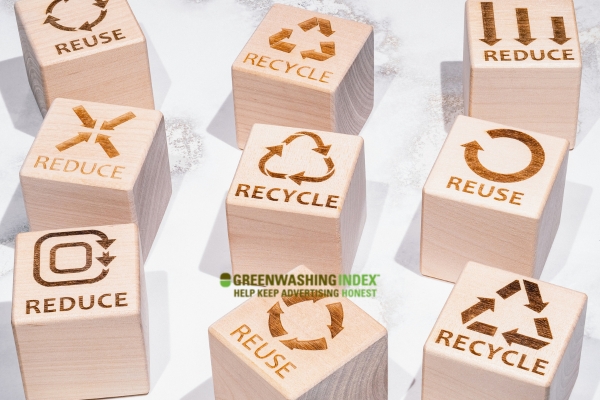
Upcycling Your Way to Lower Emissions
Reducing my carbon footprint is something I take seriously. One of the fun and creative ways I do this is by upcycling. This means I take old things that might be thrown away and make them new again. It’s kind of like giving stuff a second life.
Upcycling can shrink your carbon footprint because you’re not buying new things all the time. Instead, you use what you already have around the house, so less stuff ends up in landfills.
Let me tell you about how to upcycle for a better environment:
- Old jars and containers: I clean them out and use them to store food or small items around my home. This way, they don’t end up in the trash.
- Clothing: If I’ve got clothes that are out of style or don’t fit anymore, I turn them into other cool things. A t-shirt might become a neat bag or an apron.
- Furniture: An old chair that looks worn out can be made new with some paint and maybe some new fabric.
When we reuse like this, we send less stuff to places filled with trash (landfills). Plus, it means factories don’t have to make as much new stuff—which usually means less air pollution.
Here’s why this matters:
- Saves Resources: When we reuse things, it means we don’t need to get more resources like wood or metal from nature.
- Reduces Waste: Less garbage will accumulate at dumps if we keep using our old items instead of tossing them aside.
- Curbs Pollution: Making new products often leads to yucky air from factories; by reusing, we lessen that problem.
In simple words, Upcycling helps me do my part in taking care of our planet Earth by making sure that there’s way less junk hurting our lands and skies.
I cannot emphasize enough how cool and good for Earth these simple steps can be. It’s about getting crafty and giving something unused a whole different purpose—leading us down the path towards an eco-friendly lifestyle one step at a time!
Remember, each thing we choose not to throw away can help save the world bit by bit – truly a revolution through resourcefulness!
8. Sustainable Style Choices
When I think about Carbon footprint reduction, it often feels like a big challenge. But do you know one simple way I can help the planet? By making sustainable style choices. And I’m not just talking about buying new ‘eco-friendly’ clothes, but rather diving into the world of secondhand fashion.

Secondhand Fashion as a Carbon Statement
So, why secondhand? Well, this choice is a powerful stand against what we call fast fashion – that’s the cheap clothes we buy in bulk and throw away quickly. Fast fashion has a huge environmental cost because of how much energy and resources it takes to make and transport these clothes.
Buying secondhand means giving new life to clothes that have been loved before. Every time I pick up something from a thrift store or an online secondhand shop, I feel good! Why? Because those precious items aren’t going to waste. They’re not sitting in some landfill hurting our beautiful Earth.
Let me tell you more about how opting for secondhand helps shrink my carbon footprint:
- Less Waste: Each clothing piece reused is one less item produced from scratch.
- Reduced Resource Use: It saves water and energy that would otherwise be spent on making new clothes.
- Lower Emissions: Transporting new goods creates carbon emissions – buying local secondhand cuts this down a lot.
Think of it like this – when I choose a vintage jacket or gently worn pair of jeans over something brand-spanking-new, there’s no immediate demand for raw materials (like cotton). That means less water to grow crops for textiles, fewer chemicals dumped into rivers from dyes and treatments, and no extra energy spent on production lines halfway across the globe (which adds those pesky emissions from shipping).
And here’s something cool: by wearing secondhand outfits with pride, I am actually making a statement without saying anything at all! People notice my unique finds; they get curious about where they come from, and then suddenly, they’re thinking about their own choices, too.
It turns out that being trendy can be eco-friendly as well! Vintage pieces often offer better quality, too, because things were made to last longer back in the day—which is better than fast fashion that might fall apart after a few washes.
Second-hand shopping is like going on treasure hunts for your closet—and every victory is also one for the Earth!
Remember: small steps lead to big changes—and through sustainable style choices like embracing secondhand threads, we’re weaving positive change one outfit at a time.
9. Eco-Conscious Consumerism
When I go shopping, choosing green products is a big part of what I do to keep my carbon footprint small. Carbon footprint reduction is all about the choices we make every day. From the snacks I munch on to the clothes I wear and the gadgets I use, everything adds up.

Choosing Green Products Consciously
You might be wondering how exactly we can pick eco-friendly stuff. Well, let me break it down for you in simple steps.
First off, before buying anything, ask yourself if you really need it. This stops us from piling up things that end up in landfills. If it’s a yes, then go for items that don’t harm our home – Earth.
Look for goods with green certifications. They usually have labels or signs on them like “biodegradable,” “recycled materials,” or “energy-efficient.” These words are like a green light saying: “Yes, this is good for the planet!”
Also, pick stuff made by companies that care about our planet just as much as we do. Some businesses use part of their profits to plant trees or clean oceans, which is cool!
When it comes to food – go local and organic. Local means it didn’t travel far to reach you, which means less fuel burned and lower emissions. Organic means no harmful pesticides that can mess with Mother Nature’s balance.
Remember to bring your own bags when shopping too! Plastic bags are a no-go for us folks who want to live eco-friendly lives because they take thousands of years just sitting around before they break down.
Lastly, when an item reaches its end life with you – recycle it! Just because you’re done with something doesn’t mean it’s trash yet; give it another chance by recycling correctly.
I make all these tiny decisions, knowing they add up to shrinking my environmental impact every single day!
Every time we shop, keeping these simple yet powerful tips in mind, we are making climate-conscious choices leading towards sustainable living tips that benefit not only ourselves but everyone and everything on our blue planet – isn’t that what being environmentally friendly is all about?
10. Education Leads to Action
When I think about how I can help our planet, I know it starts with learning. Education is a mighty tool that shapes the way we live and act. Understanding the world around us, the challenges it faces, and what we can do to help is essential to make a real change.
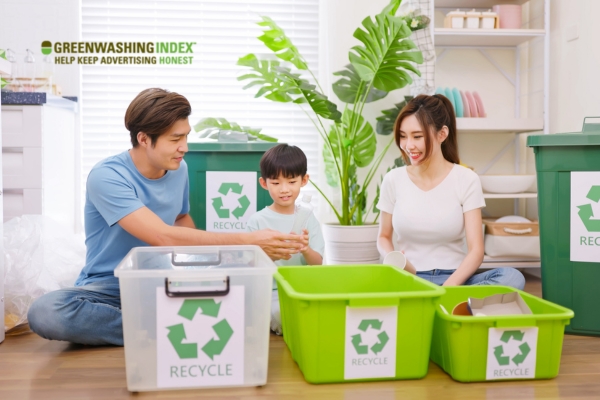
Climate Literacy Empowers Change
To really make a difference in our world, I believe learning is key. When it comes down to shrinking my carbon footprint, knowing what it is and how it affects the planet is the start. So what’s all this talk about climate literacy, and why does it matter?
Climate literacy means understanding climate change and its effects on Earth. It’s about knowing that our actions—big or small—impact the environment. Once we’re armed with this knowledge, we can start making moves towards carbon footprint reduction.
Imagine if everyone knew how their daily choices could either harm or help our planet. We might think twice before doing things that hurt the Earth. For example, learning that driving gas-powered cars adds CO2 to the air could encourage us to walk more or take public transport.
But where do we begin?
Well, there are books, websites, and even community classes that teach us about climate change and eco-friendly living. It might seem complex at first with all those scientific terms, but once you get into it, it’s pretty fascinating stuff!
I like to break things down into simple ideas:
- Our planet has a fever because of too much CO2.
- Trees are like Earth’s cool packs since they absorb CO2.
- The less CO2 we put in the air, the better for our planet.
So simple, right?
The more I learn about these things, the more I want to do my part in carbon footprint reduction—I bet others feel the same when they get clued up.
And don’t forget the kids! Teaching them early on makes a huge difference—they’re super good at soaking up new info and turning it into action!
Here’s an important thought – sharing knowledge can spread change faster than wildfire (which, by the way, also adds CO2 – see what I did there?). If I understand something well enough to explain it simply to a friend or family member who maybe doesn’t care so much about an eco-friendly lifestyle, maybe they’ll start thinking differently.
We need everyone onboard if we’re really going to shrink our carbon footprints; educating ourselves is how we start building that team of earth warriors!
Just picture this: every time someone learns a new fact about climate change and decides to act differently because of it—that’s another step towards a healthier Earth! Isn’t that what we all want?
In essence:
- Education helps me know how my actions affect Earth
- Simple steps can lead to big change
- Sharing knowledge can inspire others towards an eco-friendly lifestyle
Remember this: Understanding = Awareness → Action → Change
That’s education leading us from knowing stuff—straight towards doing stuff—that shrinks carbon footprints everywhere!
11. Community Engagement Equals Carbon Change
When I think about shrinking my carbon footprint, sometimes it feels overwhelming. But then I remember that small steps by each person can lead to big changes when we all work together. Being part of a community, we have the power to help each other in our journey to live more eco-friendly lives.
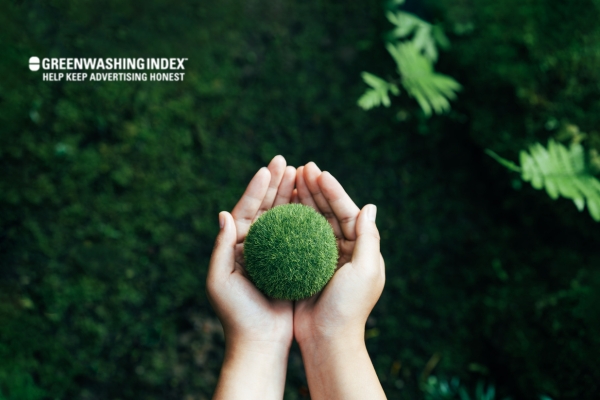
Community engagement means coming together for a cause that benefits everyone. It’s about taking our carbon footprint reduction efforts beyond our homes and influencing the wider area where we live. When communities come together, their collective effort can bring about significant positive changes for our planet.
Grassroots Movement Toward Greener Practices
Community actions play a big role in carbon footprint reduction, too!
Here’s what some communities do:
- They set up programs where people share tools and stuff so they don’t have to buy new ones.
- Groups come together for tree planting days, making their towns greener and cleaner.
- Neighborhoods hold swap meets where people trade things like clothes instead of throwing them away or buying more.
A great example is how some places have community gardens where everyone helps grow food close to home, which cuts down on those long truck trips from faraway farms.
I think when lots of us in one place start living green, it sends ripples out into the world:
- Meet with neighbors to find out what green projects each person likes.
- Pick one project and plan how you could start it together.
- Use social media or posters around town to invite more people.
- Celebrate every step forward because each small win adds up!
By doing these things, we’re building a future where our planet breathes easier — bit by bit!
12. Purchasing Power against Pollution
When I started to take my eco-friendly lifestyle to the next level, I dug deeper into how every choice I make can help our planet. It’s not just about cutting down my waste or using less water; it’s also about how I spend my money.

Every time I buy something, it has the power to support a cleaner environment or add to the pollution problem. That’s why checking where and how products are made is critical in Carbon footprint reduction.
Understanding Carbon Offsets’ Contributions
Now let’s talk about another tool in battling pollution: carbon offsets – it sounds complex, but here’s how it works, simply put:
Let’s say no matter how much effort I put into living an eco-friendly lifestyle, there will still be some emissions from things like driving or heating my home, which are hard to cut down completely at this point in time.
That’s where carbon offsets come into play:
- They are like promises that someone else will reduce their emissions because you’ve given them money.
- This way, you ‘balance out’ your own remaining emissions by ensuring less pollution happens elsewhere – hence, your total effect on clean air remains neutral if done right.
Doing this complements other everyday actions toward sustainable living, such as reducing waste or using public transport sometimes instead of driving everywhere alone:
- Choose wisely: Not all offsets are equal; some have better environmental impact than others, so picking the right ones matters.
- Additional Effort: Buying offsets should not replace trying other ways to reduce my energy use but add to them instead.
- Real Change vs Band-Aid: Making sure these offsets actually promise real change over just making me feel better requires research and understanding their terms clearly.
- Seek Certified Projects: Supporting projects certified by recognized standards ensures reliability where my money goes towards actual green practices rather than empty claims.
While buying offsets won’t fix everything wrong with our global climate all at once, they work well alongside broader carbon footprint reduction efforts when used responsibly as part of a bigger plan toward sustainability!

